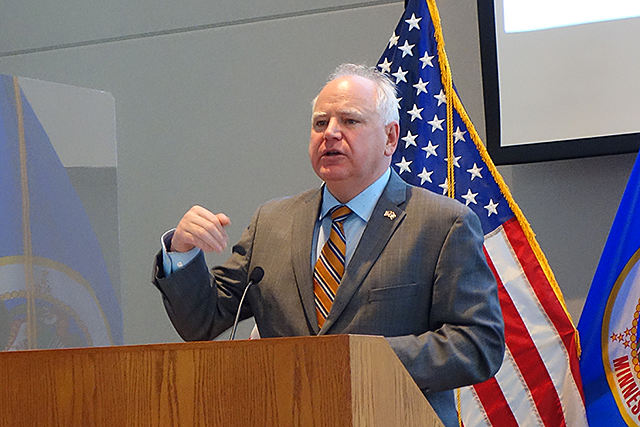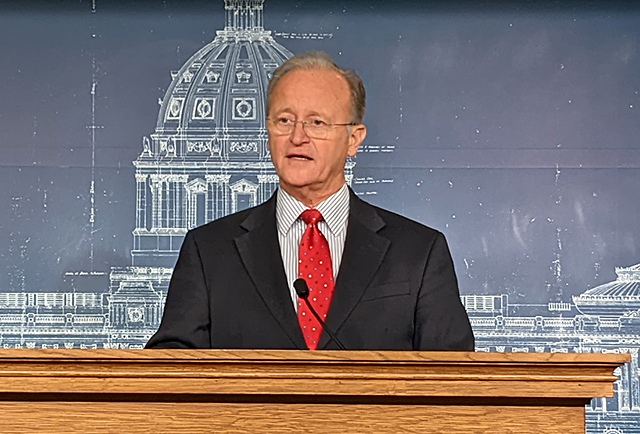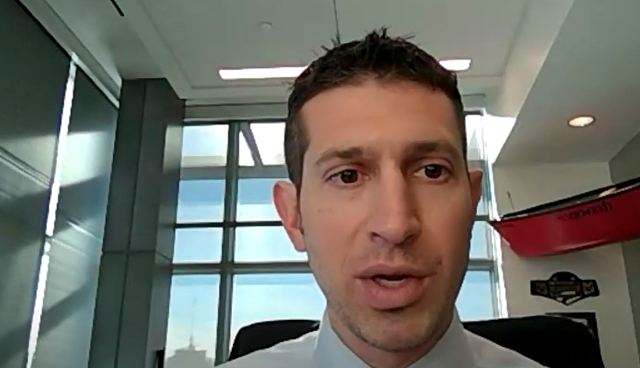When Gov. Tim Walz and top legislators announced a deal last June on legislation aimed at police reform, Democratic leaders won over skeptical colleagues angling for bigger change by promising $15 million for community nonprofits doing work meant to prevent violence.
The idea is now even more popular among Democrats. As lawmakers look to address violent crime in the Twin Cities, an infusion of cash for those anti-violence nonprofits has become a focus of public safety plans released by Walz and the House DFL.
House Democrats proposed $40 million for community groups in their $100 million public safety spending plan. Walz has also asked for $15 million in crime prevention grants for community-based public safety programs, plus nearly $50 million for youth employment and education programs and more money for other youth services.
“It is imperative that these types of programs must become a fixture of our public safety framework instead of causes of the moment,” said Rep. Cedrick Frazier, a New Hope Democrat, at a hearing for the DFL legislation on Tuesday. Frazier is vice chairman of the House’s Public Safety and Criminal Justice Reform Finance and Policy Committee.
DFLers tout research showing nonprofit work can be effective in reducing crime, and doesn’t rely solely on police departments that some people in high-crime neighborhoods don’t trust. But the proposals face an uncertain future in the Legislature.
Last year, Walz paid for the programs with money from his share of a federal stimulus package. But this year, Democrats have proposed spending from the state’s budget surplus, which means it would need to be approved by a skeptical Republican-led Senate.

Where Walz’s $15 million has gone
Walz’s $15 million for community groups was split into four separate categories: violence prevention, grants for organizations that help crime victims, “Innovation in Community Safety” grants that pay for things like youth and young adult programs and, lastly, spending in what the administration called the Minnesota Social Compact.
The social compact is a partnership of large and small nonprofits, government, local churches and schools and families impacted by crime, employing a “holistic approach to complex problems” in areas hit hard by COVID-19 and crime, according to the state Department of Public Safety. The money is specifically for things like violence interruption efforts, education and employment and academic help.
Only $2.5 million of the $15 million has been announced so far, all for the Social Compact, and of that $2.5 million, Minnesota Safe Streets is in line for the highest award at $873,000. The organization S4/STEM Nation Gaming has received more than $580,000 and the Northside Minneapolis vocational school Summit Academy OIC has received $306,000.
Walz spokeswoman Claire Lancaster said recipients of $2.5 million for violence prevention will be announced soon once contracts are executed, but $10 million for survivor support and community innovation grants are still being reviewed, some through a process set out by the Legislature.
A Mother’s Love Initiative, based in Minneapolis and partnered with Minnesota Safe Streets, is one of the organizations that specializes in violence prevention and expects to get state money. The organization hasn’t actually received the funding yet, but the state cash will help them pay for staffing, office costs, and other resources, said Lisa Clemons, founder and executive director of A Mother’s Love Initiative and a former Minneapolis police officer.
A Mother’s Love Initiative puts “boots on the ground,” Clemons said, in areas designated by Minneapolis 4th Precinct Commander Charlie Adams, and other areas the organization knows are “hot spots.”
“We also respond to critical incidents,” Clemons said. “We normally get those calls from law enforcement or someone from the community, asking that we respond and help keep the peace, basically.”
Clemons said that violence prevention work is woefully underfunded, and that she is grateful to Walz and his administration, as well as some Democratic and Republican lawmakers, “who are finally saying ‘We have a violence problem in this community.”
“I think they shy away from it because on some level it might seem like they are saying Black people are bad,” Clemons said. “I’m one of those people who doesn’t have shame about saying something about what my people are going through and why they are choosing to do some of these things, and why it’s not being addressed.”
Brian Herron, pastor of Zion Baptist Church and an organizer with the Minneapolis group Healing Place, also does “boots on the ground” work and will use $112,133 from the state for staffing, primarily. The approach of Healing Place — which also offers a safe space for people dealing with addiction or deep-seated trauma to seek counseling or simply unwind — is to go to troubled areas, for long periods of time, and offer ministry.
“A collective of Black churches and pastors came together and decided that we really needed to do something very visible to curtail the violence in our community,” Herron said.
After consulting with Minneapolis police, they settled on some of the more notorious intersections, such as 36th Street North and Lyndale Avenue North, and began a “ministry of presence,” Herron said.
“Praying, getting to know the people out there, then we began to cook and feed people, got fresh produce and handed that out, I mean just really beginning to minister in that community,” Herron said.
Smaller organizations, such as A Mother’s Love Initiative and Healing Place, have partnered with the YMCA of the North — which received $200,223 from the social impact appropriation — so that the more established YMCA can handle issues like accounting, said YMCA of the North president Glen Gunderson.
How the DFL would spend more on anti-violence nonprofits
Under the banner of improving public safety, Walz’s supplemental budget plan for spending Minnesota’s $7.75 billion surplus — and an expected surplus in the next two-year budget — includes $9 million for youth development programs and $15 million for grants to support nonprofit programs tied to things like truancy, neighborhood watch and resident engagement.
The governor also proposed spending separately on youth employment and things like community policing initiatives and housing for domestic violence survivors.
At a news conference in late January, John Harrington, commissioner of the Department of Public Safety, said “some of the best police work” in the past few years was done by groups like A Mother’s Love and the Stairstep Foundation.
“These are groups that are helping keep the peace,” Harrington said. “We know that there are going to be times when cops are not the best answer and this budget will help facilitate getting more of those groups on the street where we need them.”
Frazier, the New Hope Democrat sponsoring the major House DFL public safety bill, has praised Walz’s investment in community nonprofits, and wants more money for the programs to be part of the state’s anti-crime strategy. House Democrats also cited the money as a key equity provision in the 2021 legislative session.
His legislation would dole out $40 million in eight different categories of programs: juvenile diversion, community violence interruption, restorative justice, co-responder teams, community-based mental health and social service centers, victim services, re-entry for the formerly incarcerated and homeless aid programs for people who have left jail or prison.
Community grant advisory boards would help decide where the money goes, though they are aimed at areas with a mix of high crime and low-income residents. The state would also have to send mail to people in areas in line for grant money and hold at least one public meeting to get feedback before grants are issued.
Police are not eligible for the money. Two-thirds of it would be distributed in the Twin Cities metro area, while the rest would go to Greater Minnesota. Lastly, no organization can get more than $1 million each year.
Frazier’s bill would also set a $10 million annual budget for spending on the programs going forward indefinitely.
At a hearing on the measure Tuesday, House Democrats invited Patrick Sharkey, a Princeton University sociology and public affairs professor, as an expert witness on crime and policing research.
Sharkey said relying on police as the “primary institution responsible for public safety” can be effective, and said there is “very strong evidence” that when more police are on the street, violent crime falls.
But Sharkey said a police-and-prison-centric approach also creates “substantial harm,” including intensive surveillance of low-income communities, mass incarceration and “aggressive and sometimes violent policing.” He also said police aren’t equipped nor trained to handle all the problems in cities, such as homelessness, substance abuse and mental illness.
However, Sharkey said there is “now a large body of evidence demonstrating that residents in local community organizations can play a central role in keeping communities safe.”

“These findings reflect the larger conclusion; residents and local organizations have always had the capacity to control violence in their own neighborhoods, but they have never been seen as a primary institution, the primary set of people responsible for dealing with violence,” Sharkey said. “They’ve never been given the commitment or the resources to do so in a sustained way.”
Guadalupe Lopez, executive director of the anti-domestic violence nonprofit Violence Free Minnesota, told the panel of lawmakers that they could use the money. Lopez said her organization has seen record reports of people reaching out for services, exacerbated during the pandemic, and a lack of cash to help everyone.
GOP, police groups voice skepticism of nonprofit focus
So far, the plans from Walz and House Democrats have been met with skepticism from Republicans and some police groups. The Republican-led Senate would have to approve money spent out of the state’s general surplus.
In a letter addressing Frazier’s bill, Brian Peters, executive director of the Minnesota Police and Peace Officers Association (MPPOA), which represents frontline officers, said “positive, non-politicized collaborations between law enforcement and community organizations have enormous value.”
“Although we recognize that some of these groups may seek to undermine law enforcement or undermine their trust in community public safety efforts,” Peters said.
In a joint letter, the Minnesota Sheriff’s Association and the Minnesota Chiefs of Police Association called for “equal levels of data collection and transparency” required for law enforcement to be placed on community groups who get money under the DFL plan.
Sen. Warren Limmer, a Maple Grove Republican who chairs the Senate’s Judiciary and Public Safety Finance and Policy Committee, said he hasn’t looked at the House DFL bill yet. And while he said it’s an interesting concept, he said putting third-parties into the mix limits the ability of police to build relationships with communities.

Senate Majority Leader Jeremy Miller, R-Winona, said their focus is on funding more police through retention and recruitment efforts because “more cops results in less crime.” Miller said once crime is better under control, through paying for more cops and increasing criminal penalties, “then we can start talking about more crime prevention measures because I think those are important as well.”



0 Commentaires